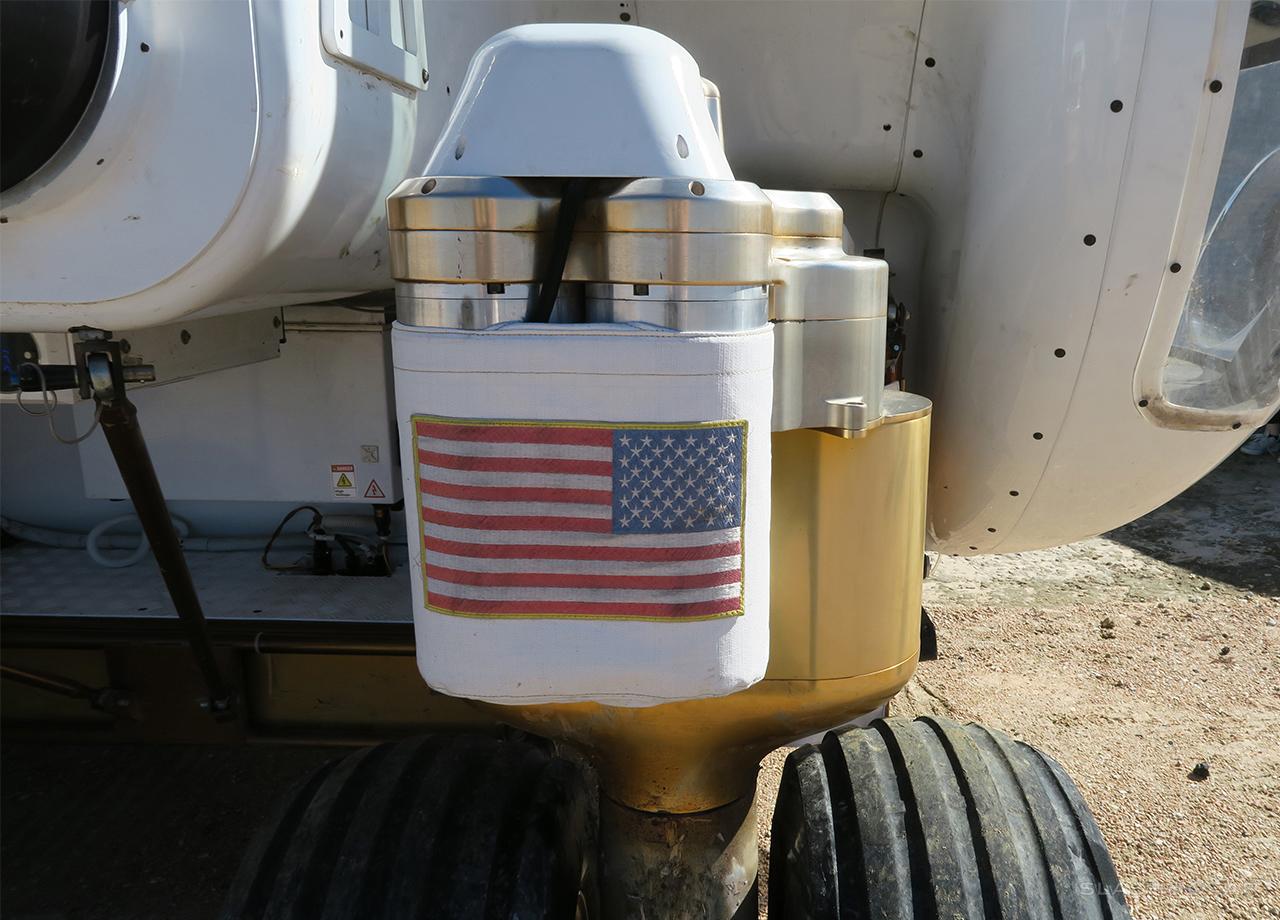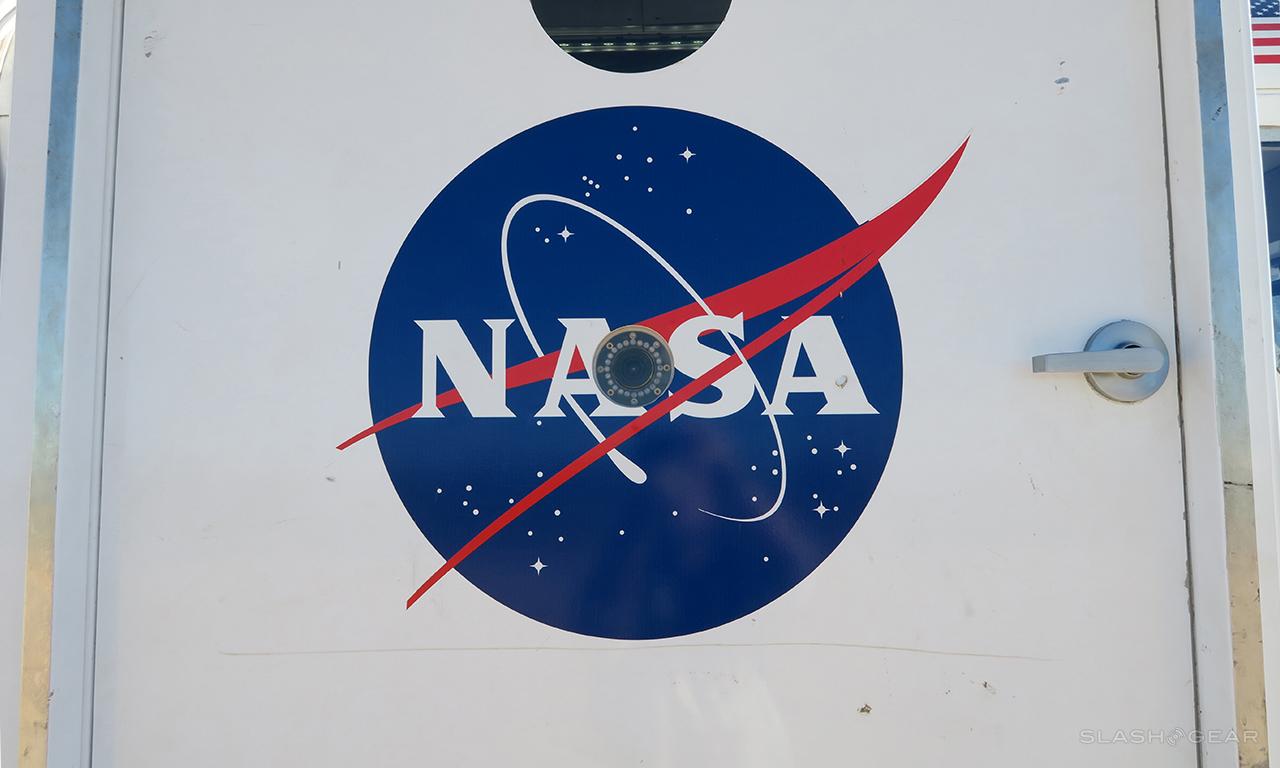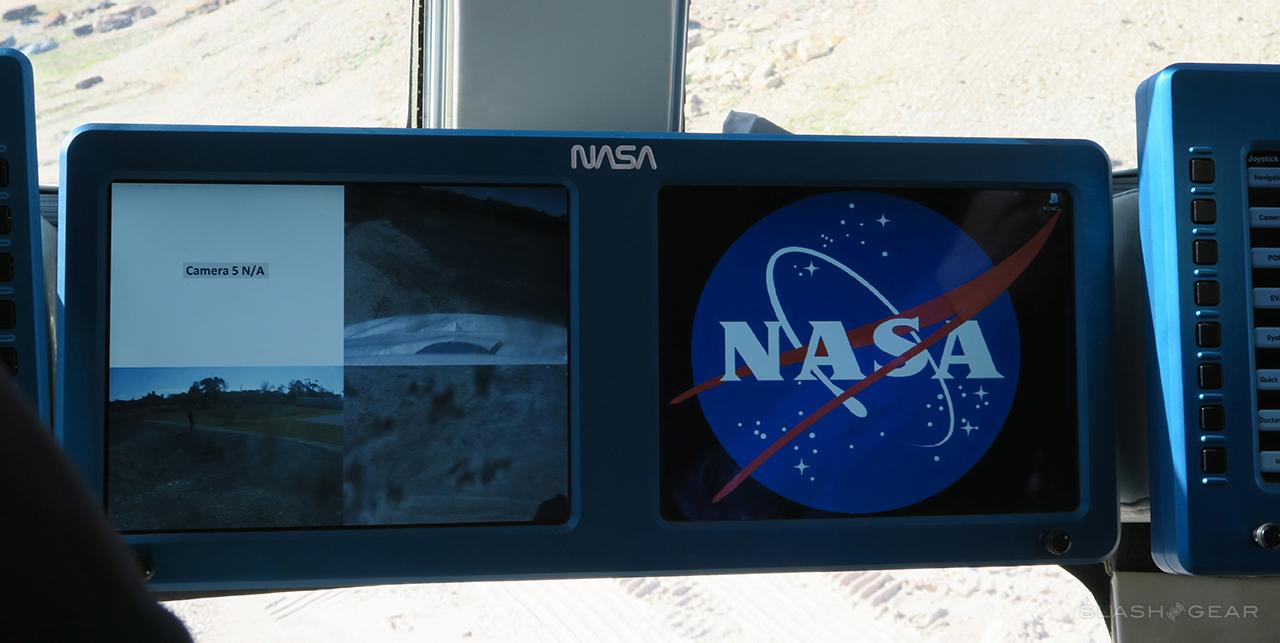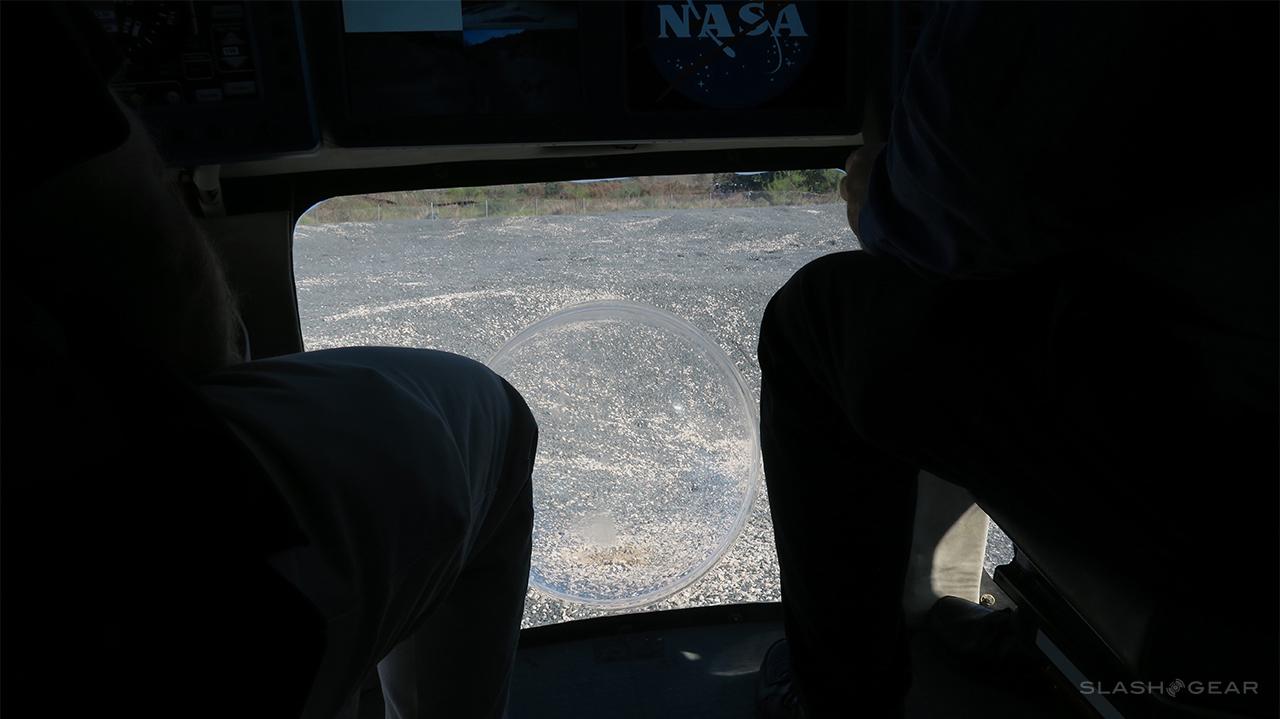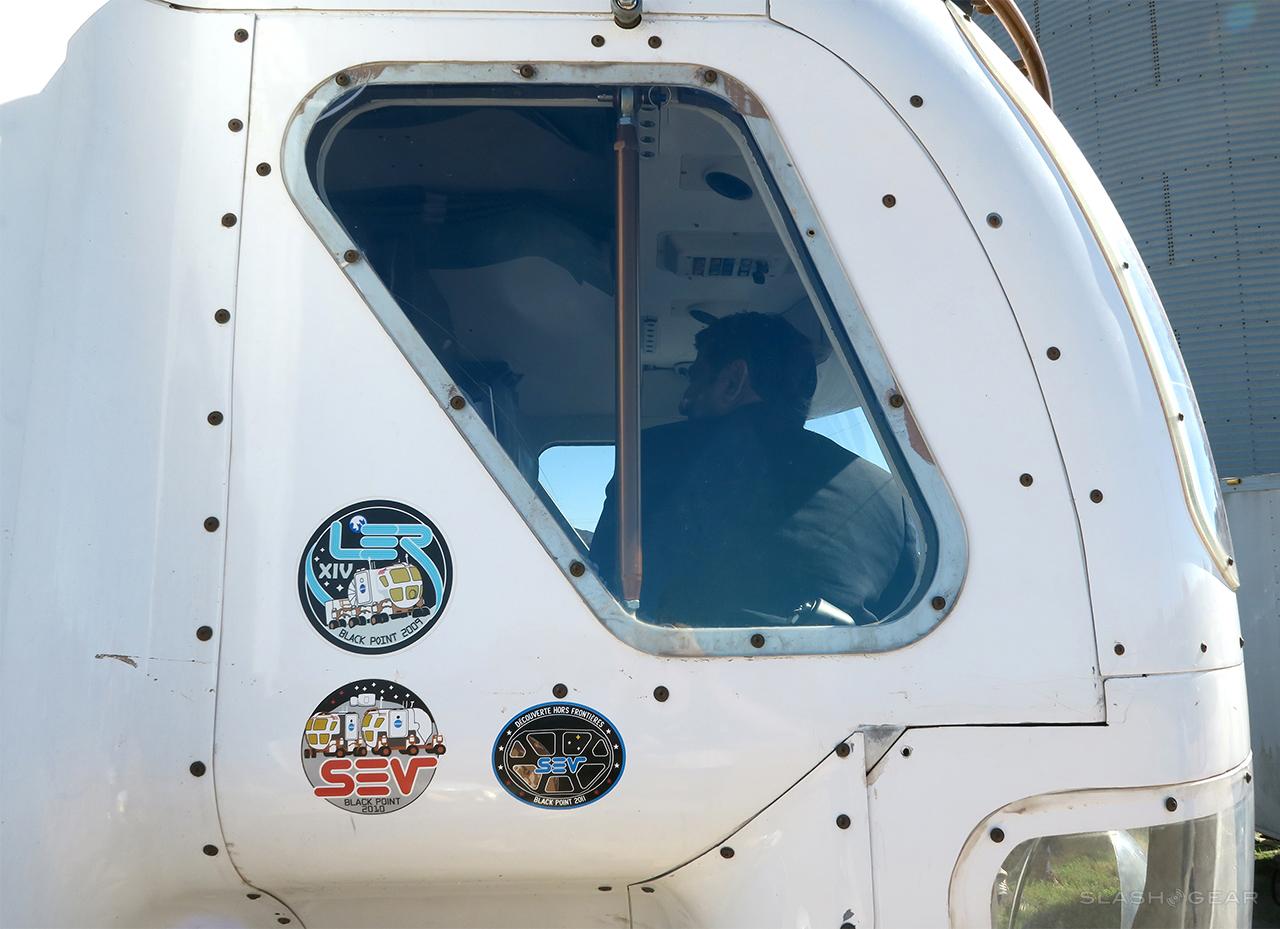You're Going To Mars, I Went To NASA
I woke up at 5:30 AM after a string of nightmares about being left alone on a dusty red planet. Like a fool I'd eaten a gigantic piece of chocolate cake the night before while watching a set of tiny teaser clips of "The Martian" to mentally prepare for the next day. "It's OK," I told myself. "Stay calm. You're in Houston. You're on East NASA Parkway in the same hotel you'd checked in to the day before. Today you're going to go on a brief ride in a Mars rover and talk to an astronaut."
Going to Mars
NASA is planning on going to Mars with manned craft within the next 15 years. I'd written about that before, but throughout the day it'd hit me, over and over again. It'd become apparent – NASA is really, truly preparing to send humans to the planet Mars within my lifetime.
I'd been invited with other members of the media to visit NASA at the Johnson Space Center in part to promote the DVD and Blu-ray release of the movie "The Martian." That's the movie with Matt Damon where he gets stranded on Mars.
Since this was to be an experience largely about the state of NASA on its trip – and our trip – to Mars, I decided to document the trip itself rather than focus on either just the movie or just the details I learned about NASA. This was to be a documentation of a moment in time, not just another stop on a movie's press junket.
From the hotel, a bus drove a group of about 30 mostly US-based journalists to NASA's security station. The morning was a bit foggy and ever-so-slightly chilly.

Deer littered the open spaces along the short drive to Johnson Space Center.
Some colleagues and Fox Home Entertainment reps joked about how today's schedule didn't mention how we'd be going to space for the afternoon.
Space Center Houston – Spherical Image – RICOH THETA
Badges administered, we entered the Space Center Houston, on past an exhibition of space accouterment and manned space flight instrumentation set up for youths and students. This building had the distinction of being called the Official Visitor Center of the NASA Johnson Space Center, and it was full of all sorts of space goodies.

The Martian
At this point in my writing career I'd been concentrating on science and space content on SlashGear for the past couple of years. At the same time, I'd also been making an effort to keep our readers caught up on the latest big-time science fiction movies as they hit theaters.
As such, an invitation to an event made for the movie "The Martian" that'd be taking place at a NASA space center was just the call I'd been working toward all this time, so to speak.
This was a pilgrimage as much as it was a press event.
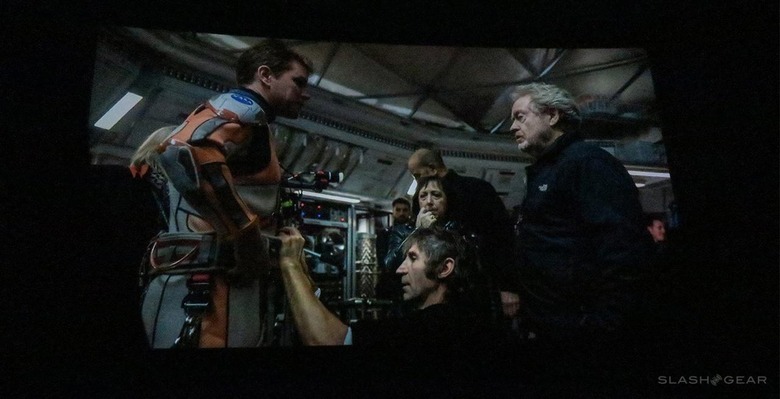
It was here that we'd be treated to a viewing of the special features of the soon to be released Blu-ray of what I like to call "Matt Damon's dry jokes in space", aka "The Martian."
What we see is more than enough to account for the cost of the Blu-ray. Or the DVD. Or the digital release. Or whatever you're going to buy come December 22nd – later this month.
Digital HD: 12.22 Blu-ray, DVD: 1.12 You'll see the "Digital HD" release in December, then the Blu-ray and DVD, and even a 3D Blu-ray if you need more dimensions – all on January 12th, 2016.
I later said to someone from the Fox camp that it was a real bummer that some people mightn't be able to see The Martian Mockumentary from this special edition of the film, because of the realities of film theft.
The mockumentary was about The Martian's Matt Damon-played character Mark Whatney, and was to be part of the special feature "ARES III: The Untold Story." This was exactly what I'd wanted at the tail end of seeing the movie several weeks before.
Backstory! More content!

To comment on the film and to a lesser extent the special features for the home audience release of the movie, three experts appeared before us. One was NASA Astronaut Andrew J Feustel. Another was film producer Aditya Sood. Third was Planetary Science Division Director Dr. Jim Green, who appeared giant-sized above the other two speakers via Skype. Super massive.
Each expressed their extreme joy at being able to have been involved in the film, where and how they were.
"It captures the imagination of not just NASA, but us as humans," said Feutel.
"If we take our existence, how long we've been on this planet, what we do on this planet, what we do next... We're finally getting to the point where we can explore other worlds. I think that's what's so exciting about the book and about the movie."
One of our own asked Feutal his opinion of companies like Space X. She effectively asked why NASA needed to keep existing.
Feutal replied, with just a pinch of indignity. One half of one percent of the annual US budget, said Feutal, that's what NASA gets.
It's not a lot.
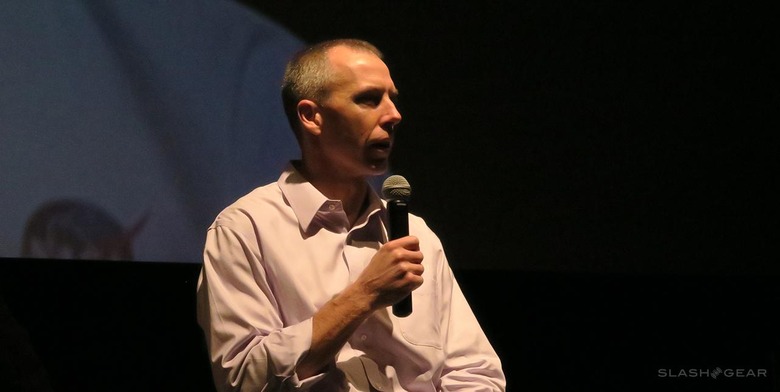
Feutal suggested that it might be partially NASA's fault that they didn't get more funding because everything has been going so well. Things become mundane when nothing goes wrong – it may be expected that, since everything seems to be going so well at NASA, that NASA doesn't need more funding. Which is silly.
Before we went on, Sood needed to comment on what Feutal had said.
"I just want to comment on the idea that what you do is mundane," said Sood. "You've been in space! That's incredible!"
"Yeah... yeah it was fun," said Feutel.
"With regard to the private groups out there – there's so many things that can be done, we just welcome that opportunity," added Dr. Green, "It's just a global view of things we need to maintain and point towards."
"One [important] aspect of the Martian is that it's within the realm of possibility," said Green. "It's much like what Jules Verne did when he was writing 20,000 leagues under the sea and the world of under-sea exploration, before there were submarines," said Green.
"The dinosaurs didn't have a space program," said Green, "The more we learn about our environment the better."
"NASA's plan for Mars is that we return." – Planetary Science Division Director Dr. Jim Green
"This is another one of the reasons why we study our neighborhood. We're very lucky to have a Venus and a Mars – they're very different in terms of their atmosphere and their elements [in a way] that could be important in how we study where we are in this point in our history on Earth."
The Wizard of Oz-sized face of Green began a slideshow to speak about what humans will be dealing with when they head to Mars. The slides were very blurry.
But it was OK, we'd seen them before, deep within SlashGear's Mars tag portal over the past couple of years. Nothing that those especially keen on keeping up with Mars work wouldn't have known at least a tiny bit about.
Green made sure to note that the area in which the ARES 3 mission (in The Martian) was landed in the film was very, very accurate. Right within driving distance to Pathfinder. Right inside a spattering of previous mission landing and last-known locations.
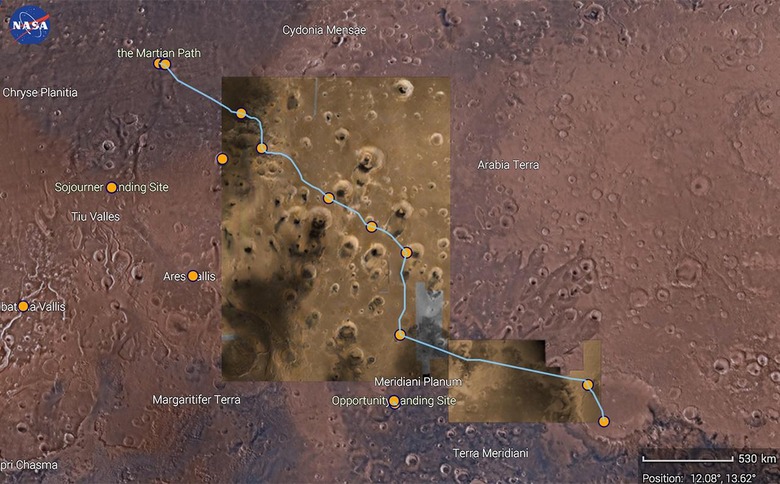
In reality, NASA has a total of 50 different locations they're currently looking at as Potential Exploration Zones for the near future. If it wasn't already clear: we're going to Mars again, and almost certainly more than once.
Unlike the accidental leaving of an astronaut on the planet Mars as we see in The Martian, NASA does not plan on dropping anyone off for an extended stay. Not yet, anyway.

After a brief encounter with the Robonaut crew at the Space Vehicle Mockup Facility in "Building 9" – a very, very brief experience – we were delivered to the rock yard.
Space Exploration Vehicle: the Mars Rover
It's literally called the Rock Yard, or sometimes the Mars Yard, being one at the moment to the "Space Exploration Vehicle", otherwise known as the "Lunar rover" or, if you prefer to look to the distant future, the "Mars rover."
Time-lapse video shows the Mars rover's ability to navigate rough terrain and maintain stability in our Mars Yard. pic.twitter.com/fd7xWfhQN7
— Johnson Space Center (@NASA_Johnson) December 3, 2015
Inside the rover we rolled down a hill and near a stream. We didn't go IN the stream for several reasons.
1. There are no streams like the one we saw on Mars.
2. The rover might get stuck because the stream was deep.
3. The battery for the rover is around 20-inches off the ground, and water and electricity make bad things happen.
We also went up a rock hill, down a rock hill (as you'll see above), and over some rocks that your car would certainly get ripped apart upon.
See how to view the video above in virtual reality with your smartphone and a Google Cardboard headset.
The experience was uplifting. Being able to turn on a dime made me feel like future explorers wouldn't be falling off any cliffs for lack of a 90-degree move.
Building 9: Space Vehicle Mockup Facility
Back at the Space Vehicle Mockup Facility in Building 9 we met Stuard "Stu" McClung, an engineer on the Orion project. "Orion is the capsule that you launch off Earth and land for any deep space mission," said McClung. "We are location agnostic, be it the Moon or an asteroid, or eventually Mars, this is the capsule they'll go up in."
It's a lovely piece of machinery, and one that you'll recognize.
Orion Project – Building 9, Johnson Space Center – Spherical Image – RICOH THETA
In response to a question of using Orion for Mars, McClung made clear, "today my mission is a crew of 4 for 21 days in that capsule. For a mission like Mars, that capsule will go up and dock with [a different craft] that'll then go on a longer mission."
"[Also] we're sized for 4, but we have the capability to expand to 6."
"Internally, our marching orders are, we're told to march toward the 2030's." – McClung
In response to a question of the possibility that NASA will get to Mars within the next several decades, McClung said, "Internally, our marching orders are, we're told to march toward the 30's."
If you'll remember back on April 15th, 2010, President Obama said we'd be going to orbit Mars by the mid-2030s: "By the mid-2030s, I believe we can send humans to orbit Mars and return them safely to Earth," said the President. "And a landing on Mars will follow. And I expect to be around to see it."
See the President's full speech on NASA.org.
"There's a lot that has to happen," said McClung, a bit over five years later here in December of 2015.
"I'll tell you that my capsule will be ready," said MyClung. "You think about "what does it mean to get there." Are you going to just touch down and leave again, say "there we did it!" To have a presence, when you start talking about a presence, if [you're talking about the] 2030's, 40's I think that's pretty viable."
We ate lunch. I ate some sort of red-sauced pasta with cheese, potato wedges, carrots, and one abnormally large cookie. Quite different from what we'd be seeing in the space food lab soon thereafter, that's for certain.
Space Food
We took a trip to the astronaut food department – the lab, that is to say – and learned a bit about what it means to make food for space from one Vickie Kloeris. She gave us a few factoids you might be interested in.
1. "Yes we still fly tang, and no we didn't invent Tang."
2. The packages they use for liquids is similar to what you might've had in your lunch pail when you were a kid. "We use the same packaging Capri-Sun used, they've now modified their packaging a bit." You'll see this package below.
3. "We could not accommodate an astronaut who had a severe peanut allergy. Vegetarian? Yes, that's a different thing."

When pressed on the idea that we'd be able to farm potatoes on Mars like we see in The Martian, Kloeris said, "I certainly think that given the right infrastructure you'd be able to do it."
"You're certainly not going to be able to do it on the first mission to Mars, [but] our test is to make these products last long enough to get to Mars." She reminded us that they'll have to fly the food there, first, and verify that it's arrived and viable before they take off with humans to head to Mars. The food that astronauts will be eating on their return flight from Mars "is probably going to be 5-7 years old."
Speaking to an Astronaut
We had a sit-down with the same astronaut we'd heard from briefly earlier in the day, Drew Feustel. Once again, our questions turned to the viability of a mission to Mars with humans in tow. What did an astronaut think of the possibility of being in the situation Matt Damon was in in The Martian?
"We've got a guy in space for a year right now," said Feustel. That guy is Scott J Kelly, American astronaut and retired U.S. Navy Captain. He's the guy that takes all the pictures. He recently took a photo of a UFO.

"I think anyone contemplating a mission like that," said Feustel, "probably tries to consider the possibility of being stranded or being lost or something happening to the crew. You know, even when you launch into space, there are certain realities of the outcome that you don't necessarily think about all the time, but you know they exist. Just – catastrophic events and what they can do, you know – whether or not you would develop some psychological instabilities, or gone a little bit wacky, it's hard to say."
"Anybody might – but, you know, people have survived in solitary confinement or as prisoners of war for much longer periods of time and actually, in many of the interviews I've seen, have been OK. And they come out that way by maintaining a certain focus and mental concentration that gets them through it. Thinking about their family, thinking about their friends, thinking about all those stable things in their lives rather than their scenario – what they're going through."
"We've never stopped training humans for long duration interplanetary space missions." – NASA Astronaut Andrew J Feustel
Feustel went on to speak with us about what NASA was doing to prepare for Mars in the not-too-distant future.
"NASA is looking at what's at the Space Station, looking at what's next. And we believe it's something out of Low Earth Orbit."
"So that means building the Orion spacecraft, which you saw over in Building 9, building the SLS (space launch system) heavy lift spacecraft to take humans and equipment out past Low Earth Orbit to somewhere else. And that somewhere else is the Moon, asteroids, and Mars."
"In terms of training humans to do that – we've never stopped training humans for long duration interplanetary space missions. And we have simulations – it's kind of at a low level, at a reduced cost, right now but we have simulations every year that are related to planetary exploration missions, and we look at hardware and technologies and all the things we need to support those surface missions."
"Building the architecture to launch the stuff from space – that's the rocket, and then the ground part is a lot of the stuff we test on the Space Station, and also new technologies that we look at every year for surface exploration."
The Martian's Producer, Aditya Sood
The Martian's producer Aditya Sood also appeared once again – though he'd been with us here and there the whole time, I'd suspected. See if you can find him in any of the earlier photos from the day. I'm certain he'd gotten to ride the rover before us.
"It was a lot of pressure to [live up to the reputation of an organization like NASA]. We wanted to do right by NASA – I mean the book is a love letter to NASA, in a lot of ways – but at the same time I think it takes a very realistic portrayal of a big organization, and the many differences of opinion, and people aren't going to agree with their bosses, and sometimes the boss is going to win and sometimes you're going to win, but NASA embraced that, and we wanted to, we definitely did want to make a movie they were proud of."
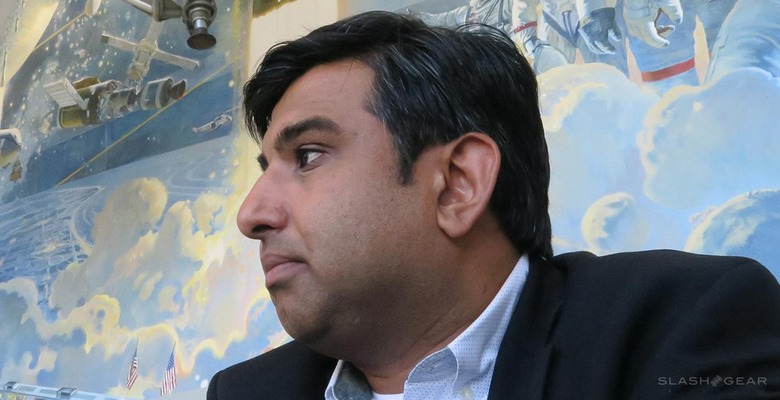
"We had to take the movie, we had to show them just about six weeks before the movie came out to make sure, you know, they were happy with everything, so we showed it to them, and of course you're always a little bit nervous, because we'd been living inside it and thought it was pretty good, but you never know how people are going to react."
"So I took it to D.C. and they loved it, absolutely loved the movie. And the only thing they said was, 'yeah the offices are much nicer in your movie than they are in real life.'"
Sood laughed, "but I said, yes, but our movie takes place in, you know, a couple decades in the future and NASA's clearly got an infusion of cash where they're able to mount a Mars mission."
Asked about the production of the bonus features for the home release of the film – especially the mockumentary bit we'd seen earlier, Soon said, "There were a number of pieces that we did around the movie that were on the DVD as well, about the ARES 3 crew, and the different aspects of the mission that were additive to the movie."
"And I think they add such an air of authenticity, and I think that's something that's critical, and Ridley [Scott] really believes in. And so – that was something that he's definitely done a number of times and, I think, to great effect."
Mission Control Launch
The film The Martian is littered with bad luck, especially due to highly volatile situations and emergencies that didn't allow for extensive preparation. This isn't common with NASA – but as Feustel reminded us, everyone needs to be prepared for the possibility of misfortune.

As luck would have it, the final event of the day at Mission Control turned out to be a scrubbed launch.
Rain was the culprit – but even without being able to see a rocket take off toward the International Space Station, the event was grand. Sitting in the viewing theater just above the consoles used by the professionals as they made a space launch possible – that was pretty neat. Even with the launch temporarily halted, the event was grand.
We're going to Mars, and not just with robots
We'll be going to Mars within your lifetime. We've been hearing it from NASA time and time again over the last several years, and I suppose I believed it. But getting up close and personal with the physical evidence that we're on our way – that really, truly convinced me we're on the path to the red planet.
I've become a true believer.

NASA will be headed toward Mars with human astronauts within the next 15 years. Until then, you'll want to take a look films like The Martian to see what it'll be like. Think of that movie like a Scared Straight instructional video for lighthearted space explorers – driving to Mars can be fun, but it'll be a lot of responsibility!
Stick around SlashGear's Space portal and Science portal for more intergalactic adventures and exploration beyond our atmosphere, and we'll be reporting on everything exciting and important, well into the future!
Tap in on our NASA Johnson Space Center gallery to see additional photos and video from this event!





